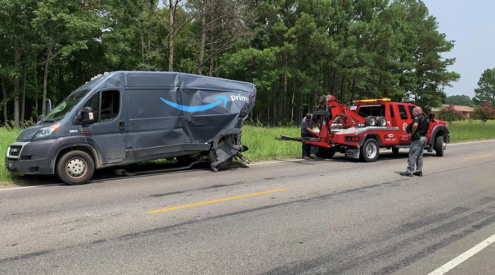
Amazon’s rise as an e-commerce giant has revolutionized shopping, but its delivery operations come with a troubling cost: a surge in road accidents involving its vehicles.
This issue is particularly pressing in cities like San Francisco, where traffic congestion, narrow streets, and limited parking create a challenging environment for delivery drivers.
In 2024 alone, San Francisco saw 42 traffic fatalities, the highest number since 2007, with 24 of those being pedestrians. These figures prove the growing risks on the city’s streets, notorious for their dense population and complex urban layout.
If you or someone you know has been affected by such incidents, consult a San Francisco Amazon delivery accident lawyer. They can help you understand your rights and seek justice.
The Scope of the Problem
Amazon’s delivery network operates on an unprecedented scale. With over 400,000 drivers on the road and millions of packages delivered daily. However, this rapid expansion has led to an alarming increase in accidents involving Amazon delivery vehicles. The promise of same-day or next-day delivery creates tight schedules that push drivers to prioritize speed over safety. Reports reveal that many drivers skip breaks, work through fatigue, and engage in risky driving behaviors like speeding to meet quotas.
Untrained Drivers and Unmarked Vehicles
Many drivers are hired through programs like Delivery Service Partners (DSPs), which include small businesses contracted by Amazon. While this model offers opportunities for new drivers, it often lacks adequate training and oversight, increasing the likelihood of mistakes on the road. Additionally, unlike traditional branded trucks, these vehicles are harder for other road users to identify, creating confusion and safety risks.
Legal Challenges and Liability Issues
Many drivers are classified as independent contractors or work for third-party DSPs, shielding Amazon from direct responsibility. However, critics argue that Amazon controls these drivers by setting strict schedules and monitoring performance through apps.
Recent lawsuits have highlighted how this control may make Amazon partially liable for accidents. For example, cases like Edmonds v. Amazon.com Inc. have shown courts increasingly holding Amazon accountable due to its influence over DSP operations. These legal battles further prove the need for victims to seek experienced legal representation.
The Human Cost
The consequences of these accidents are devastating. Families have suffered irreparable losses, as seen in tragic incidents. Similarly, college student Iliana Velez lost her life in a collision with a contractor who had a history of traffic violations, a case that further exposed systemic flaws in Amazon’s hiring practices.
Beyond fatalities, thousands of drivers face injuries due to unsafe working conditions. Reports indicate that one in five Amazon delivery drivers suffers serious injuries while on duty, a figure that has skyrocketed by 40% since 2020. These statistics paint a grim picture of the human toll behind Amazon’s logistical success.
What Can Be Done?
To address these issues, several measures must be implemented:
For those affected by such accidents, seeking legal counsel is vital. A skilled attorney can navigate the complexities of liability claims and ensure victims receive fair compensation for medical expenses, lost wages, and emotional distress.
Conclusion
In conclusion, Amazon’s delivery network is an impressive feat of modern logistics but comes at a steep price of compromised road safety and human lives. As accidents continue to rise, it is clear that systemic changes are needed to protect both drivers and the public.